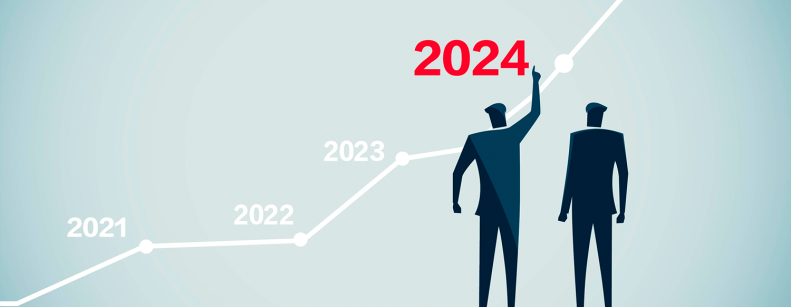
Since our last international fixed income update, where we recommended considering a gradual move out of cash into longer maturities and corporate bonds (SEE HERE)things have been evolving more favorably.
Already looking ahead to 2024, in our Asset Allocation Outlook, bonds emerge as a prominent asset class.
The FOMC sent some moderate signals at its December meeting.. The *dots now show three rate cuts next year, and the post-meeting statement now acknowledges that inflation has slowed and the forward guidance in the statement moderated the possibility of further increases.
Economic projections indicate that a large majority of the Committee is comfortable with multiple cuts next year, although growth is expected to be only modestly below trend. With the better recent news on PCE inflation, and with the Committee signaling that a further advance in inflation will be sufficient for looser policy, a first cut is now expected in March and a 125 bp lower target range by the end of 2024.
In our base case, we continue to expect some moderation in yields in the coming months, albeit at a slower pace than seen in November, as activity and inflation cool, and we continue to recommend moving gradually out of cash into longer maturities and corporate bonds as historically, U.S. treasuries and fixed income in general have tended to generate attractive risk-adjusted returns in a "post peak" fed funds rate environment.
Given current valuations and the prospect of slower economic growth and falling inflation, we believe fixed income has rarely been as attractive relative to equities, we believe that fixed income has rarely been as attractive relative to equities.
Current valuations and levels could strongly favor fixed income: While not a perfect indicator, starting levels of bond yields give us clues about future returns. The yield levels currently offered by high quality fixed income have been followed by higher returns over the longer term (typically an attractive 5%-7.5% over the subsequent five years).
Our strategies continue to favor high credit quality, mostly US investment grade, and duration in the middle part of the curve (around 5 years).
What are the risks?
For more details, please refer to the attached international fixed income strategy in the following link , where you can also find different investment opportunities.